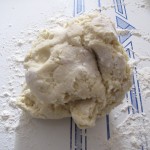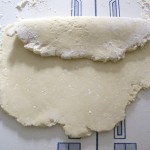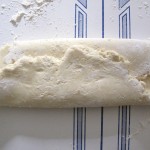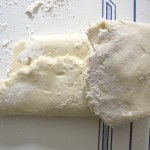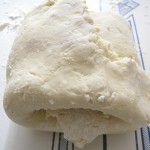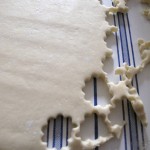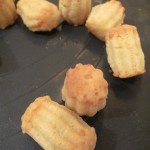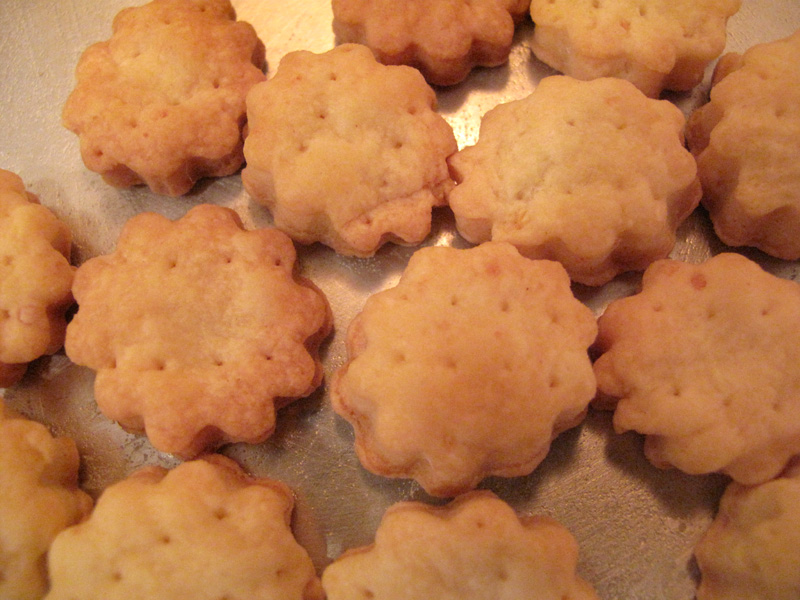
This is a recipe that my father used to make for cocktail parties and was usually one of the first things to disappear. My sister and I seem to often be on the same wavelength and just as I was deciding on making these for Neil’s birthday party, she emailed me to ask for the recipe. She confirmed that hers disappeared immediately, so I thought I would post the recipe with directions on how to make them.
The first batch I rolled out to about 1/4″ thickness, which was *way* too thick. You can see from the photos below that they kind of shrink up sideways and puff upwards. The first batch were freakishly high, so I rolled the subsequent batches thinner (and poked them with fork tines).
Pogacsa (sometimes seen as Pogatcha)
Equal weights of:
flour
butter
cream cheese or feta cheese. I used feta cheese for these. I used 8oz (1/2 lb) measures of each and got a nice sized basket of crackers. Several dozen.
I love Hungarian recipes! They are usually quite simple. Okay, so I mixed the butter and cheese together until it was well-blended. Then I added the flour and mixed it with the dough-hook on my stand mixer. The dough is very thick. You can see the bits of feta in my dough.
Generously flour a surface and roll the dough out as seen below. You will fold each edge to the center until you have 4 flaps folded in. Repeat this several times and keep it well-floured. The rolling part is very important, otherwise the crackers won’t puff.
Wrap in plastic and let rest in the fridge for about 1/2 hour.
Roll out thinner than 1/4″ (I have photos of the overly puffy crackers. Don’t let this happen to you!) and cut with a small drinking glass or other cutter. I used a canapé cutter, which I think was too small. So about 1 1/2-2″ across. I also suggest poking them with the tines of a fork to keep the puff factor down.
Bake at 350 degrees F for 15-20 minutes until they are golden brown. You can put them directly on the cookie sheet. There’s enough butter in these that they won’t stick to anything!
They are best warm, but are still delicious room temp. If you have any left over you can always warm them up and have with lunch. I only had extras because I had an insane amount of food at the party where I served them.
- dough
- 1st fold
- 2nd fold
- 3rd fold
- final fold
- used canapé cutters, but could go wider (ie. small drinking glass)
- 1/4″ too thick
- too puffy!
- thinner with tine marks
- better amount of puff

